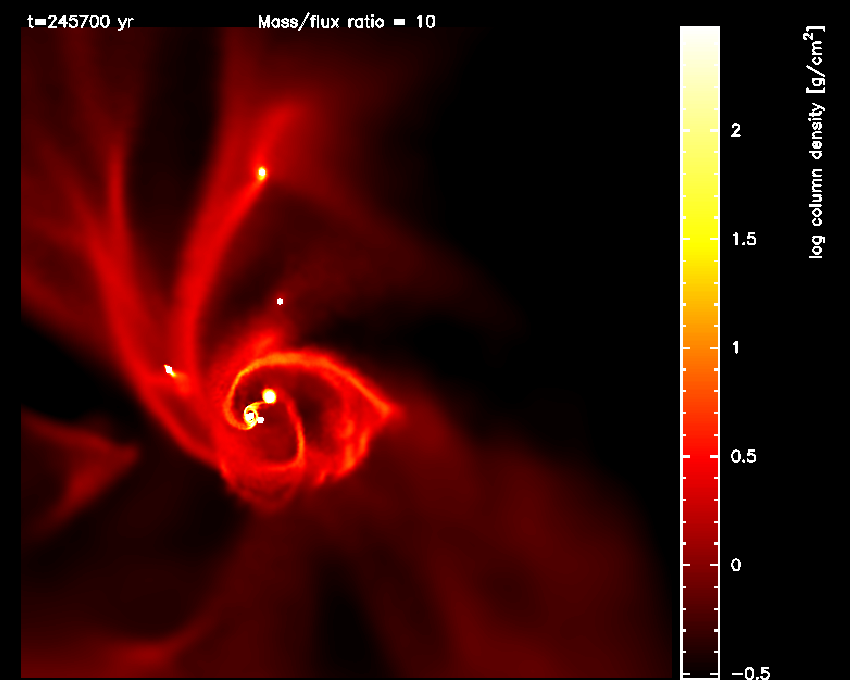Determining the initial dust content of a protoplanetary disc

Determining the dust content from the pre-disc stage is fundamental to understand planet formation quantitatively but has not being extensively investigated so far, since it required 3D numerical simulations with self-gravity, non-ideal MHD and dust. With PHANTOM, we are now in a privileged position to address this question.
The objectives of this Work Package are therefore:
- To determine typical dust distributions after the pre-disc stage, and conclude on the ability of forming planets during this phase and on potential observational signatures.
- To compare and validate our results against simulations performed on RAMSES, an AMR grid-based code.
- To derive analytical models for dust evolution during the pre-disc stage by analogy of the theory developed for discs.
For this purpose, we will generalize the dust-free simulations, exploring a set of initial conditions by varying the rotation of the cloud and its initial geometry, replacing the usual sphere by an ellipsoid of various aspect ratios. The results will be compared against RAMSES simulations. In a second step, we will carry out simulations with coagulation/fragmentation and try to reproduce observed size distributions.
